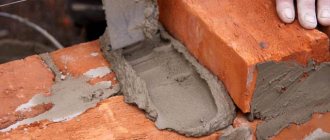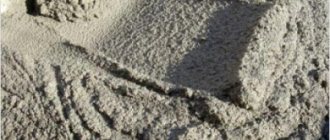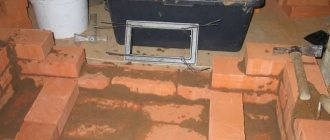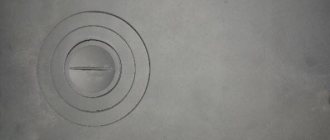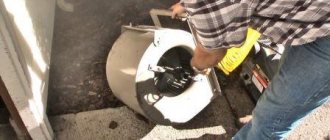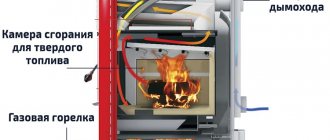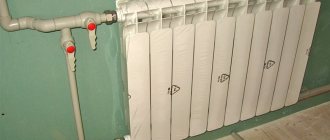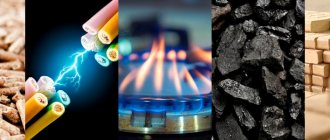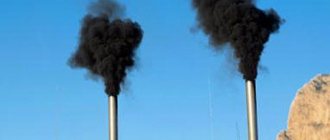- Refractory
- Visual inspection
Not every building material is suitable for the construction of an effective heating device and a safe gas exhaust channel. Therefore, we propose to consider bricks for laying a stove: which ones are better, what shape, color or size they may have, how to choose and distinguish high-quality from bad, what kind of manufacturers produce them. After reading this information, you will know what and in what quantity to buy for arranging the foundation, the lining itself, and how not to overpay.
People continue to prefer high heat storage, practicality that allows you to build different shapes, and the special comfort of a traditional appearance. Long service life and environmental friendliness are a classic solution for years to come.
No. 1. Basic requirements for bricks for laying stoves
The stove must cope with a lot of complex negative factors affecting it, including very high temperatures and sudden temperature changes down to negative values, if winter occurs only occasionally in a country house. The chimney, which is in direct contact with the environment, is also exposed to sudden temperature changes. Therefore, the brick that is used to equip the stove in the house must meet the following general requirements:
- resistance to high temperatures and open flames;
- high mechanical strength;
- resistance to temperature fluctuations;
- the ability to accumulate heat and retain it.
To lay one furnace, different types of brick are used, and each is used in the arrangement of a specific part of it.
Quartz blocks
They are similar in properties to fireclay blocks, but have a more uniform and dense structure.
Quartz blocks are not cheap, so the entire stove is never made of them. In addition, they do not withstand aggressive chemical environments well. The material has reduced linear expansion, which means it can only be used in places where metal parts will pass.
No. 2. Furnace elements and suitable bricks
A solid fuel stove is a complex structure, each element of which operates under different conditions, so it is unlikely that it will be possible to lay out all its component elements with one brick. Conventionally, the following parts can be distinguished in the design of the furnace:
- foundation;
- firebox;
- smoke ducts;
- chimney;
- cladding
1 - foundation, 2 - firebox, 3 - smoke circulation, - cladding, 5 - chimney
Brick for the furnace foundation
Natural requirements for foundation bricks are strength, moisture resistance and frost resistance , since part of it can cool to sub-zero temperatures. Ceramic or clinker bricks are used to construct the stove foundation . A universal option is first-grade ceramic brick, which can even be used for the construction of massive two-story stoves. It is permissible to use ceramics of lower quality if the load on the furnace foundation is low. Clinker brick is used in regions with harsh climates, as it shows exceptional frost resistance.
Brick for furnace firebox
The solid fuel combustion chamber, as a rule, has two-layer walls : the inner part is made of fireclay bricks , and the outer (facing) is made of ceramic . The temperature in the firebox reaches 1100 0C, and ceramic bricks begin to melt at a temperature of 1150 0C, so the inside of the oven is lined with fireclay bricks, for which such temperatures are not destructive. Moreover, the material copes well with heat accumulation. It is worth noting that sometimes the firebox is laid out of heat-resistant ceramic brick , but this is only possible for stoves with a relaxed thermal regime (for example, a Russian stove). Since the exterior decoration is not affected by such high temperatures, it can be made from facing ceramic bricks .
Brick for smoke ducts
Smoke ducts are the large heat exchanger of the furnace. The temperature in it, although lower than in the firebox, is still high and it is better to use fireclay bricks . Externally, smoke channels can be lined with ceramic bricks.
Brick for chimney
The temperature in the chimney can vary from -400C to +4000C, i.e. the material must be frost-resistant and withstand temperature changes . In addition, the pipe must warm up quickly enough so that the furnace can increase draft - if this happens slowly, then we will deal with excessive fuel consumption and increased soot deposition. It is also worth taking into account mechanical loads, which mainly consist of the influence of wind of any direction. ceramic bricks with maximum frost resistance are suitable for arranging a furnace chimney In regions with a harsh climate, pipes can be laid with two layers of brick : the first is clinker, the second is hollow ceramic . By the way, this is the only case that allows the use of hollow bricks when arranging a stove.
Brick for oven cladding
Depending on the idea and design solution, the furnace lining is performed in one of the following ways:
- ceramic building brick , which is distinguished by the presence of a sufficient number of pores to ensure the breathing of the furnace. Its rough surface will become a good basis for facing material;
- plastic molded ceramic facing brick provides the necessary breathing for the stove, gives it an aesthetic appearance, turning it into an interior decoration, and the entire structure is made as durable as possible due to the ligation of the seams;
- clinker facing tiles meets the requirements for home stoves, looks great, but is not cheap, so it is not used often.
What is the best way to finish?
If the stove has an independent meaning as part of the interior design, then it is best to use plastic-molded facing bricks to decorate it. It is almost always 2nd grade; this is exactly what is needed for the stove shell. When building a new furnace, the facing bricks are simply laid on the outside. Then the finishing happens by itself, and 3 birds with one stone are killed at once: the stove breathes deeply, takes on the appearance, as long as the seams are neatly cut, and comes out durable, because All seams are tied properly.
If you are covering an old stove, then you don’t have to think about bandaging the seams of the masonry with the lining, if only because the old ones have dried out. But the “thermal kicks” will eventually do their job and the lining will begin to peel off. Previously, in such cases, the stove was first lined with unglazed tiles on lime mortar, and on top of it - with bricks on the same mortar. The tiles played the role of a kind of damper. Now you can do it easier and cheaper: mix the masonry mortar of the cladding using the same aluminous cements.
Decorating the fireplace to fit into the interior
It also happens that, according to the designer’s plan, a stove or fireplace should fit organically into the interior, at least as shown in Fig. Then 3 options are possible: narrow decorative brick, pos. 1 on the right in the figure, hand-molded Ekaterinoslav brick, pos. 2, and clinker facing tiles, item 3. The latter is a little expensive, but the best in quality: clinker tiles are well matched according to the TKR with brick, are durable, adhere tenaciously to any mortar, are available in a variety of colors and textures and allow the stove to breathe - there are few pores in clinker Yes, there is, but the thickness of the tiles is small.
Narrow brick is suitable for fireplaces: a stove lined with it will not be able to breathe. You need to purchase it carefully: manufacturers often use polymer additives. According to the certificate, the heat resistance of narrow bricks for lining fireplaces must be at least 140 degrees.
As for the heavily advertised Ekaterinoslav (or eagle) brick, there are no complaints about its quality. But the price is clearly too high compared to the capabilities of the material. Apparently, the marketing service is guided by the principle: Mercedes stands for the star, and we stand for the double-headed eagle. Maybe they charge a fee for fear: Ekaterinoslav is the present-day Dnepropetrovsk, the appanage patrimony of the notorious lord (or rebbe?) Kolomoisky.
Although who knows how P/R Kolomoisky looks at this eagle. You can’t deny him (p/r Kolomoisky, not the eagle) resourcefulness. So, it was decided one day. national revolutionaries under Kolomoisky emerge as a dangerous competitor. They say that by law it is impossible to be a governor with dual citizenship. So he was immediately found: “And I have not a double, but a triple!” Here, please, is a Ukrainian passport, here is an Israeli one, and here is a Cypriot one! Where in the n-π law is multiple citizenship prohibited? So, please, at least load two-passport passports into a cannon, uncut, and at the separatist terrorists. Don't touch me! I have three passports, I can! Otherwise, the battalion boys will immediately explain how the laws should be interpreted!”
Scratched pp. national revolutionaries where they wear a hat: but it’s true, there is nothing in the law about n-π multiple citizenship. It wasn’t written down, they didn’t think of it, nor did they think about the only possible thing that would be most correct and simplest. They retreated, and so the p/r Kolomoisky remained to rule his patrimony.
No. 3. What should ceramic bricks be like for a stove?
Ceramic brick actually underlies the construction of the furnace and also serves for its cladding. It is not difficult to guess that the durability, safety and correct functioning of the stove depend on its quality and compliance with the requirements. For masonry, it is better to choose a brick with the following characteristics :
- strength grade indicates what compressive load the material can withstand (kg/cm2). The market offers bricks from M75 to M300 and even higher grades. The denser the brick, the slower it cools, but at the same time, the slower it heats up, so here it is necessary to adhere to the golden mean. It's better to stick with the brick brand not lower than M150 and not higher than M250, and for a two-story stove it is better to use M200-250. Bricks M100 and lower are not suitable, since they do not have sufficient strength and thermal properties, and bricks higher than M300 grade cannot be obtained from natural raw materials - additives are used for its production, which are justified in housing construction, but are harmful for stoves;
- frost resistance is indicated by the letter F and the number following it, indicating the number of freezing and thawing cycles that the brick can withstand. This parameter is especially important when installing a chimney that will constantly be exposed to temperature changes. It is better to choose a brick with frost resistance of at least F75 ;
- fullness . For masonry and lining of the furnace, only solid ceramic bricks (with the exception of the above-described case of arranging a pipe in cold regions);
- preparation method. Ceramic bricks are suitable for laying and lining the stove plastic molding, which involves squeezing out a clay mass with a moisture content of about 20% through a die and further cutting the formation into modules of the required size. Semi-dry and dry-formed bricks are made from pre-dried clay, which makes it possible to obtain a product with the most accurate dimensions, but such bricks are inferior in strength to plastic bricks. You can recognize a dry and semi-dry brick by its even cut on all sides.
Ceramic bricks are divided into grades , and each of the three grades has the right to be used in the construction of a furnace, but only for certain work:
- the first grade is a brick with precise geometry, moderately fired, uniform bright color, gives a ringing metallic sound when tapped, edges do not crumble, cut marks do not have burrs, strength and pore size are sufficient. Such bricks are used for construction and lining of the furnace;
- the second grade is a slightly unburned brick with a lightish tint, when tapped it gives a clear but dull sound, can be used for cladding;
- third grade - this is burnt brick, whose frost resistance and heat capacity do not meet the requirements for masonry and lining of the furnace, but the foundation for it can be made from such material.
Hyperpressed blocks
Produced from screenings of calcareous rocks. For bonding, Portland cement is added to the mixture, which makes up up to ten percent of the total mass. When producing raw materials, the proportions of water are strictly controlled, because the cement must mature. The bricks are molded and put under the press, observing the technological requirements of temperature, humidity of the mass, and pressure level in the pressing apparatus. The stores receive blocks that already have a clear shape, with texture or smoothness; some models imitate rocks.
The brand area indicators of the brick are at the level: good frost resistance and low level of hygroscopicity. Despite decent characteristics, the material is not suitable for a Russian brick stove.
This is due to several reasons:
- Brick is not at all plastic. When shrinking, the material will crack; it also cannot withstand fracture loads.
- The lime base must not be subjected to thermal heating. Carbon dioxide is immediately released and water is absorbed. A stove made of hyper-compressed brick will not last long, which means that after some time a new structure will have to be built.
- Due to the high density of the brick, the stove turns out to be very massive, but the performance characteristics do not improve.
Hyper-pressed brick is more suitable for facing work - it is good for laying plinths and facades, fences. Stove makers say that it is only suitable for lining outdoor brick stoves with their own hands, because there is no thermal effect of the combustion chamber. All the advantages of the material will then be visible.
No. 4. Fire brick for furnace
The furnace firebox is lined with special refractory bricks; the following types of bricks can be used:
- quartz brick made from sandstone with the addition of a small amount of clay. The result is a durable glazed brick, a bit like fireclay. He is exceptional heat-resistant, but expensive, does not withstand exposure to aggressive chemicals and metal oxides. Its use is justified when laying heat-reflecting arches of stoves and fireplaces. Often the so-called quartz brick is laid out. a fireplace tooth is a shaped masonry element that reflects infrared rays into the room. It is not suitable for installing chimneys, as condensation can easily destroy the material. Only solid bricks are used;
- fireclay brick has gained higher popularity than quartz, as it is much cheaper and more resistant to negative influences. It is made in exactly the same way as ceramic, but refractory types of clay are used, and firing takes place at a temperature of 15000C, so it is not afraid of temperatures up to 13000C.
In view of the described features, fireclay brick is most widely used when laying fireboxes ; they are used to line the combustion chamber of the furnace and the initial parts of the chimney channels, where afterburning processes are still possible. Fireclay brick is suitable for creating all elements of the furnace, but its use is limited by its high price and specific appearance.
When choosing fireclay bricks for the stove, pay attention to the following points:
- products must be durable, have little porosity, and have a uniform color;
- standard sizes come in a wide variety and may match or differ from typical ceramic brick sizes. It is easier to lay out the firebox with narrowed, shortened, elongated, shaped bricks and bricks with reduced block widths and complex configurations;
- to test for strength, just throw a brick from a height of about 1 m onto a stone floor. If the product breaks into large parts, then it is of high quality, and a bad brick crumbles into a bunch of small elements. This is how quality is checked in production. It is clear that not every seller will agree to such experiments, so you can rub the edge of the brick, and if there is no dust or crumbs, then the product can be used for masonry. A long sound when tapping is a sign of high quality first-class fireclay bricks, which can be used in furnaces with intense thermal conditions. Second grade gives a gentle but clear sound when tapped, it is suitable for all other fireboxes. A dull sound is a sign of a defect; it is not recommended to use such a brick.
Using clay for plaster
Fireclay clay as a plaster in the application process is not much different from conventional plastering with cement. To complete the work, you will only need a large and medium spatula.
The solution is prepared in a ratio of 7:2:1, where the following materials are in order from greatest to least:
- Quarry sand.
- Fireclay sand.
- Portland cement.
Portland cement is an essential component in the composition Source udarnik.spb.ru
As in the case of masonry mortar, salt can be added to improve properties. Only 100 grams is enough for a bucket.
Fireclay clay, which is used for plaster, is applied with a spatula. During the process, you need to quickly pick up all the small drops and level the surface. The thickness of the plaster layer should be 1-2 mm. After this, leave to dry, the exact time of which will be indicated on the fireclay clay packaging.
No. 5. Clinker brick for kiln
The use of clinker bricks is allowed in the construction of the furnace. It is produced on the basis of special refractory types of clay (clinker), which are fired at temperatures up to 1300-15000C. At this temperature, the clay is sintered with mineral additives into a glassy mass, and traces of drips are even visible on the spoons. Clinker brick is characterized by the highest strength (M300 and even higher), frost resistance (F100 and higher), can withstand temperatures up to 12000C and is not afraid of aggressive substances .
So why are such products not so often used in the arrangement of stoves? It's all about the high price , because there are almost no deposits of suitable raw materials in Russia, and the high weight of the brick. In addition, clinker bricks are not able to ensure proper “breathing” of the furnace, and in terms of heat resistance they are inferior to fireclay bricks.
Sometimes the use of clinker bricks for laying a stove is justified:
- when building a large, heavy kiln, the starting rows of the foundation can be made of durable clinker;
- for the internal chimney channel with its temperature changes and high concentration of combustion products;
- for creating compact stoves, such as potbelly stoves, especially for baths.
Where can I buy?
This question is important for many home craftsmen. Definitely large specialized construction stores. It is better if the company is an official dealer of the manufacturer.
The most important thing is where to buy stove blocks. It is much more important to check their quality and all documentation from the sellers. Sometimes construction markets charge high prices for products from well-known brands. Use the data provided in this article and carefully check the quality and measure the dimensions of heat-resistant bricks. At the slightest deviation, think - maybe go to another store and look for quality material?
No. 6. Which brick should not be used for a stove?
It would not be amiss to list which bricks cannot be used for the stove, since this is a responsible design and requires compliance with safety precautions. So, completely unsuitable:
- silicate brick , which is afraid of high temperatures and moisture. In frequency construction, unfortunately, it is still used at your own peril and risk;
- raw brick;
- slip cast brick , which can crumble due to temperature changes;
- hyperpressed brick also will not withstand temperature fluctuations.
Silicate blocks
It attracts with its regular shape, different colors and smooth surface. Made from lime additives and quartz sand. Before putting raw materials into production, they are cleaned of organic and mineral inclusions.
The finished mass is molded and pressed at a certain temperature, which is why the brick has a dense structure. The material is more suitable for cladding a building, internal partitions, and only if it is pre-treated with a protective agent.
Building stoves and fireplaces from this type of brick is not the best idea, because silicate practically does not adhere to clay mortar, and this is a prerequisite. Sand-lime brick is considered unstable to temperature changes; it absorbs moisture, which is why it quickly collapses. Low heat capacity is another reason why brick is not used for stoves; the structure will heat up quickly and cool down quickly.
The material is not suitable for finishing the foundation. Low strength indicators and proximity to soil moisture do not allow its use in this department. Brick can be used as a chimney lining, although it is better to look for a more durable material.
No. 7. Size and shape of bricks for the stove
When laying a stove today, as a rule, they use a standard single brick with dimensions of 250 * 120 * 65 mm, but some masonry schemes are designed for the so-called. furnace module dimensions 230*125*65 mm. This is already an outdated format, but manufacturers, as a rule, have a whole line of products focused specifically on the stove module, so before buying a brick you need to understand exactly what type the stove was designed for.
To build a stove, you may need a non-standard shaped brick - shaped . It is necessary for easier and higher-quality formation of the firebox, as well as for external decoration. To create decorative arches, vaults and other shaped elements, you can use wedge-shaped bricks with end or edge narrowing. The parameters in this case are written in this way: 230 * 114 * 64/45 mm. Bricks with rounded corners, arched and others can also be used.
Pechnoy
Kiln bricks belong to a special subspecies, as they are fireproof and, due to this, their price is an order of magnitude higher. This material is resistant to high temperature changes and retains heat well. An excellent product for laying out a stove, fireplace or other hearth products.
The size always corresponds to the standard:
- length 250; width 125; height 65 mm.
Thanks to these parameters, it fits comfortably in the hand, the masonry is smooth, not lopsided, and has no excess seams.
Modern manufacturing provides a large selection of shapes: wedge-shaped, traditional, arched. Thanks to this, the façade of a stove made of this material can look individual.
Since it was created specifically for laying a stove or other fire-hazardous structures, even the slightest defect is completely eliminated. After all, this material is also used on an industrial scale, where minor flaws can turn into a catastrophe on a large scale.
How to choose the right one
When you tap the stove brick, it makes a sound similar to metal.
If you try to destroy it, it will crack, not crumble. A brick that is not made according to the standard - an unfired brick - will accumulate moisture, which will ultimately become the root cause of destruction of the structure in which it will be used. Therefore, the choice, if the manufacturer has not been previously verified, should be taken with full responsibility.
No. 8. Brick for the stove in the bathhouse
The stove in the bathhouse operates at high humidity, so general design principles cannot be used here. Clinker bricks are best suited for arranging a small sauna stove , but fireclay and quartz bricks are not suitable, since their use at a humidity of more than 60% is not allowed. Another option is to create a firebox from ceramic refractory bricks , and make the lining from first-grade ceramic bricks.
Short description
Refractory bricks for stoves are capable of not collapsing and deforming under the influence of high temperatures - the main difference from conventional building materials. It is made from several types of clay with the addition of substances that increase the heat resistance of products.
It is recommended to use several types of building materials when laying individual parts of the stove. To cover the outer layer, red ceramic or white silicate is used, and the firebox is lined with fireclay bricks. It is important to maintain the overall color scheme of the heater on the outside and inside.
In order not to overpay, you should not buy parts with a grade above M-300 . The digital value indicates the safety factor of the products. If the grade is below 100, the material is of poor quality with improper geometry and density of the material. M-500 bricks are used for laying industrial or powerful units.
No. 9. External inspection of brick
When choosing a brick for a stove, it is necessary to look at the certificate of conformity , which should indicate the basic properties of the material and necessarily emphasize the fact that this brick can be used in the construction of a stove. In addition, a visual inspection is essential:
- the brick must have precise geometry with a maximum deviation of 2 mm;
- If you take a brick in your hand and, holding it up, give a weak blow with a hammer, the tool should bounce off the surface with a ringing sound. This indicates that there are no cracks inside the brick;
- a crash test , but the way a brick breaks and what its internal structure is can say a lot. Crushing and uneven coloring of the cut is unacceptable;
- fireclay bricks must contain a minimum of shells formed during the release of gases during firing. There should be no more than 4 of them, and on different faces.
Characteristics
The quality indicators characterizing fireclay bricks are strictly controlled by the state. GOST specifies indicators that reflect the weight of fireclay bricks and its dimensions, the composition of raw materials with the percentage of aluminum oxide, as well as technological properties: strength, geometric parameters, fire resistance, porosity.
The main indicators are shown in the table:
When manufacturing products, many manufacturers rely on their own specifications instead of the conditions prescribed by GOST. Therefore, when choosing a material, the question arises of which brick to take. Indeed, in terms of a number of characteristics, products manufactured according to GOST and according to the manufacturer’s specifications very often do not coincide. In this case, it is better, if possible, to purchase a product with a GOST mark, since it is of better quality.
As for geometric parameters, GOST specifies the size of a standard rectangular product as 230x113x65 mm, and this is considered the optimal material for the construction of brick structures. But today other dimensional characteristics are also acceptable, so the market is filled with a variety of products from different manufacturers.
The weight of products also has different indicators, and ranges from 2.8 kg to 4.5 kg, with the permissible weight according to GOST - 3.7 kg. When purchasing, do not forget about this, because the thermal conductivity of the material depends on the mass. To maintain heat in a room, you need to choose a material with more weight, because low weight increases its thermal conductivity.
Resistance to chemicals, alkalis and high temperatures depends on the quantitative content of aluminum oxide in the building material. The content of this element in the composition affects the structure of the material, making it porous. And porous brick heats up for quite a long time, but also cools down longer than usual, retaining the resulting heat.
At the same time, as porosity increases, strength decreases. Therefore it is worth choosing
material with an optimal density of 1700–1900 kg/m. Density also affects such properties as: moisture absorption, thermal insulation, adhesion to the mounting mortar and the weight of fireclay bricks.
You can determine the porosity of a brick just by holding various options in your hands.
To summarize, we can say that when choosing such a building material, production standards, dimensions, weight, aluminum oxide content and density should be taken into account. https://www.youtube.com/embed/Dn5APA4JuTQ
We advise you to study - How to choose curtains for your interior
No. 10. Kiln brick manufacturers
The best guarantee of brick quality is the name of the manufacturer. Refractory bricks are represented by products of foreign and domestic enterprises, among which the largest and most reputable are:
- LODE is a Latvian company that specializes in the production of a wide range of bricks. Kiln brick is the most important part of production and is widely distributed in the domestic market;
- Wienerberger AG is a huge concern that grew out of a small Austrian company. Now it is a world leader in the production of bricks and tiles, which has 230 factories in 30 countries, incl. and in Russia. For the construction of furnaces, the company offers heat-resistant facing bricks of the Terca brand;
- JSC "Keramika" – Belarusian company, produces oven bricks under the Vitebsk Brick brand. This is a ceramic brick that is suitable for cladding a stove or fireplace, and there is a large selection of shaped products. The manufacturer indicates that its bricks can also be used to construct a firebox;
- CJSC "BKSM" (Borovichi Brick Factory) is an enterprise with long-standing traditions, its products are represented in all regions of the country with ceramic refractory and fireclay bricks;
- OJSC "BKO" (Borovichi Refractory Plant) specializes in the production of refractory materials, incl. produces fireclay bricks.
Of course, the quality of the stove also depends on the design, mortar, and construction technique, but what brick is chosen for laying the stove is of decisive importance, so this issue should be treated with the utmost care.
The article was written for the site.
Tags:Brick, Oven
Tips for choosing
In order for the source material of the stove to meet the standard, and for the product to not fall apart after laying and testing, you should be very careful when choosing a brick. Here are some tips:
- A fake contains foreign impurities - individual elements of limestone or stones. It is best to purchase the entire required volume of bricks from one manufacturer at once. It is desirable that all products be from the same batch. Unburnt brick has a light shade, and its overall dimensions may differ from standard ones.
We hope that all the tips described above will be useful when laying a stove yourself. It is worth emphasizing that this process is very complex and its implementation requires not only materials, but also a lot of experience.
Red brick is rarely used for façade finishing of ovens or fireplace structures, but more often for laying the foundation.
How to choose
Now brands of fireclay bricks or other materials are presented in all stores, and looking at the abundance of which, the buyer is lost. This won't happen if you know what to look for before purchasing.
First you need to read the characteristics stated by the manufacturer. Documents are asked from the seller if the data is not freely available. You don’t need to take the sellers’ word for it, even if they work in a well-known chain of hardware stores.
When the buyer is convinced that the brick matches and there are all accompanying documents, he evaluates the quality of the material.
- Inspection and comparison of several products. There should not be significant differences in size in one batch; the permissible discrepancy is only two millimeters. Low-quality brick may have a distortion of shape, crumbling on the edges and corners, helical curvature of the edges, pronounced heterogeneity, signs of burning or foreign inclusions.
- There should be no mica film on the brick. This material does not tolerate temperature changes at all.
- Check your hearing. Masters who have been working for a long time always check the material this way. If you gently tap with a hammer, the sound will be clear and high quality. A dull sound indicates poor raw materials or irregularities during manufacturing. In this case, the bricks are not sufficiently hardened and dried, which means they will quickly become unusable.
- Crash test. You can conduct an experiment, but only with the consent of the seller. The block is split, thereby assessing its strength and density. If after splitting there is no dust, but only large pieces, then the brick is of high quality. More is visible on the cut than on the surface, so the experiment is still worth conducting.
- Voids and homogeneity. Large clay or any other inclusions understand the strength of the brick and signal non-compliance with production technology.
- Cut color. It should be the same at any depth. Is the light shade predominant towards the center? This is an unfired brick with low strength. Dark spots indicate that the material has been burned, which means it has become more fragile. The first option can be purchased for cladding, and the second is suitable for laying the foundation.
For internal channels, only properly fired bricks are used, because the material is subject to a large thermal load. There should also be no surface defects, otherwise soot will accumulate in these areas.
You cannot use different types of bricks in one department. First they sort the bricks, and then they get to work. If there are whole bricks left from the old stove that were used before, then they can be reused, but in places where there is no contact with high temperatures.

